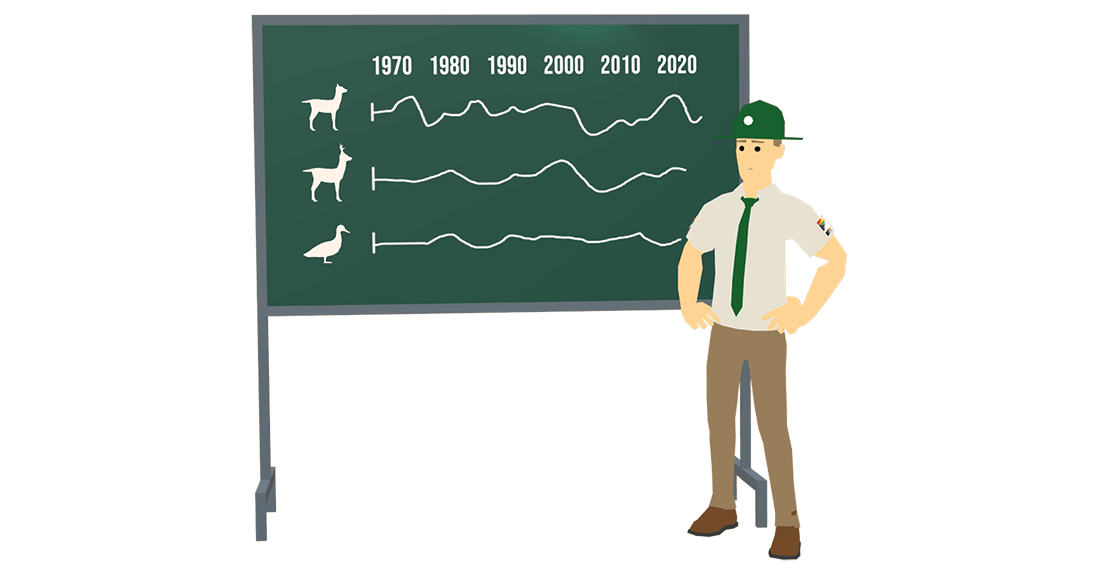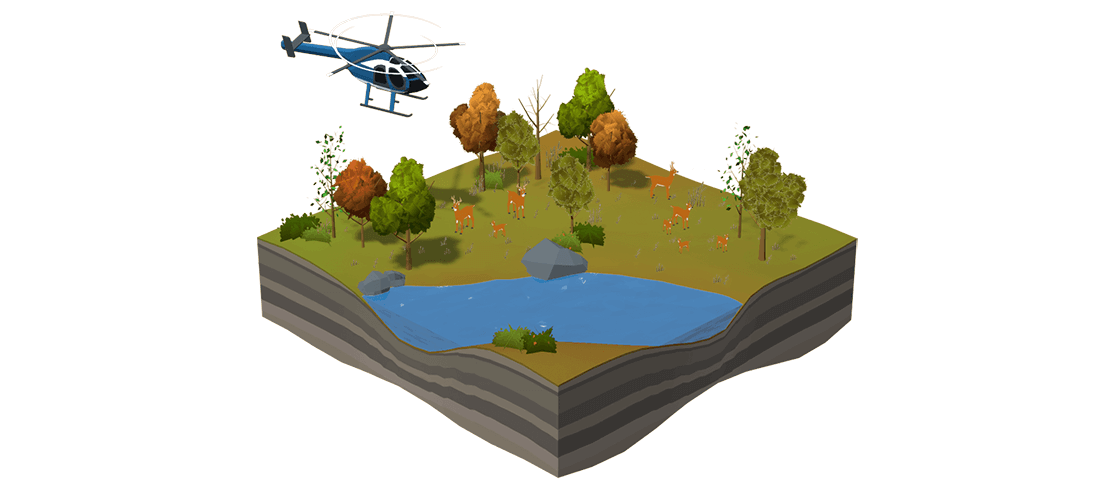Habitat and Inventory
Habitat for wildlife
Food - Water - Cover - Space
The loss of habitat to uncontrolled development is the greatest threat to wildlife. An appropriate habitat for wildlife must have food, water, cover, and space in a suitable arrangement.

Food
Different species of wildlife need a variety of foods to survive. Some animals cannot live without grasses and shrubs. Other animals could never survive without insects, grains, acorns, and vegetation. We must also consider the availability of the food supply.
Water
All living creatures need water. Many animals get almost all their water straight from the food they eat. Others must drink large amounts of water. As with food, we have to consider the availability of the water.
Cover
Animals need shelter or cover to hide from predators and for protection from the weather. Often, shelter means trees and shrubs with lots of leaves. It can also be as simple as a rock pile or a patch of weeds, depending on the animal's needs.
Space
Animals need space to survive. Overcrowding leads to excess competition, starvation, and disease. Many animals are territorial. This means that they try to protect and maintain the space needed for their survival.
Arrangement
A suitable arrangement for any habitat includes food, water, cover and adequate space. If one component is removed from the habitat the animal would not be able to survive.
Geography and conditions of the area will determine how the species are distributed within. There are many types of habitats, therefore a good mix will meet the needs of many different species.
Some species require large areas of similar habitats, whereas others use a variety of habitats at different stages in their life cycle and require multiple habitat types in close proximity to one another to survive.
Arrangement of space differs according to species. Red squirrels, for example, can usually find enough seeds and den sites to survive in an acre of pine trees whereas wild turkeys require 500 to 2,000 acres of mature woods mixed with open fields to survive.
Wildlife manager
Population control

To set hunting seasons for a particular wildlife species, managers must consider a number of factors. They must know as much about their species as possible. Managers must consider historical trends, current habitat conditions, breeding population levels, long-term projections, and breeding success. The goal of the wildlife manager is to keep the animal population as close as possible to the carrying capacity of their habitat.
Managers rely on a variety of methods to get information about their species' population.

Have you ever wondered why restrictions are placed on certain hunting seasons or species? Why was an antlerless deer season introduced? Why do some wildlife management zones have a "bucks only" season for white-tailed deer?
The answers to these questions are fairly simple. If wildlife managers want the population to increase, you will often be able to harvest adult males only. This allows all the females to produce young animals. Therefore the population should increase.
If the population is too high, you might be able to harvest one or more "antlerless" deer. This type of season reduces the number of females and the number of young born. The population should decrease.
Different seasons and hunting restrictions are designed to keep populations in balance with the available habitat.
When you realize why seasons or bag limits are set, you begin to understand the role hunters and regulated harvest play in managing wildlife populations. Regulations are set to control wildlife populations through the yearly harvest.
Hunters spend more time, money and effort on wildlife conservation than any other group in society. Hunters are game managers!